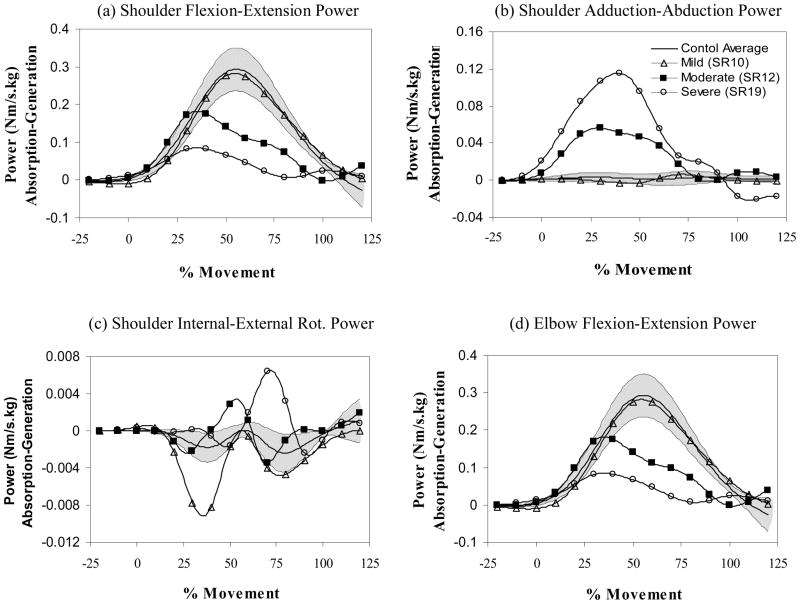Figure 2.
Joint path profiles for (a) shoulder flexion-extension, (b) shoulder adduction-abduction, (c) shoulder internal-external rotation, and (d) elbow flexion-extension. Joint angle is shown on the vertical axis and normalized movement time on the horizontal axis. Profiles are shown for mild (open triangle), moderate (filled square), and severe (open circle) impairments of the paretic arm (single trial profiles from individual subjects are shown compared to the control average (N=10 subjects)) (solid line) and range (1 standard deviation – shaded region). Notice how the profiles become progressively more abducted and internally rotated with impairment. Mild, moderate and severe corresponded to approximately the lower, middle and upper third of the Fugl-Meyer range of scores for the paretic arm condition.

